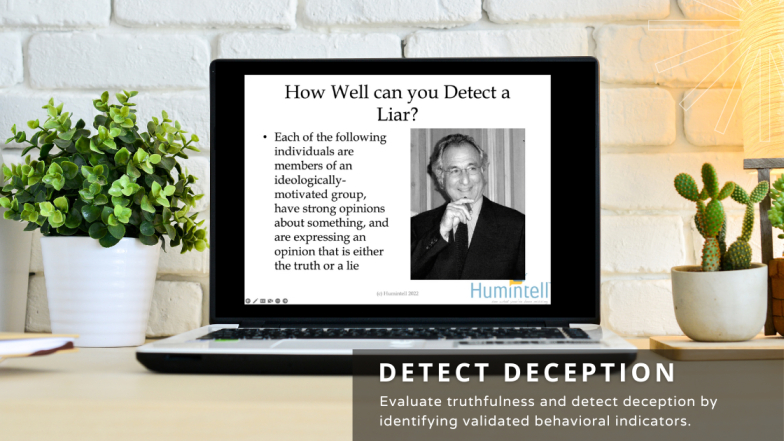 What are some myths about deception? What are good deception detection techniques? How can auditors build more trust?
What are some myths about deception? What are good deception detection techniques? How can auditors build more trust?
Dr. David Matsumoto, a renowned expert in the field of microexpressions, gestures, nonverbal behavior, culture, and emotion recently appeared on the Audit 15 Fun Podcast with Jon Taber to answer these questions and more.
Myths about Catching Liars
Dr. Matsumoto emphasizes there are many myths surrounding deception detection that have not been validated by science or vetted in the field.
Here are a couple myths:
1. There is one body language behavior that is always indicative of lying.
For example- many people believe liars look to the left or scratch their nose. This has never been validated by science or vetted in the field in a consistent way.
2. Liars look away when talking or answering a question.
This hypothesis has been tested in many studies around the world and is almost never have been found to be true.
Interestingly there is also data that liars know this misconception exists and will therefore look at the interviewer more when being questioned.
Is Deception Necessary?
Catching liars is difficult and Dr. Matsumoto believes humans are wired to not know what people are truly thinking and feeling.
Societies have required some degree of blindness to what others are think and feel and that blindness is necessary for human societies to function.
He emphasizes that if we knew what others were thinking and feeling all the time, nothing would work; work organizations wouldn’t exist, recreational organizations would not exist, marriage would not exist.
Dr. Matsumoto believes that humans are wired to have a truth bias. In fact, there’s a lot of data that demonstrates when people are making determinations of veracity or deception there is a truth bias in those judgements.
However, there are people who are in professions (such as law enforcement officers) who we would want to be better at detecting deception than the average person.
Validated Deception Cues
Deception cues do exist verbally and non-verbally. Verbally, they can be in different ways: inconsistencies in speech, certain adverb usage or going off on extraneous tangents. Non-verbally the cues can occur in the face, body, voice, gestures, and body posture.
How to Catch a Liar
- Know that deception cues occur multi-modally across multiple channels and they’re not fixed.
- Get trained on validated indicators (both verbal and non-verbal).
- Practice active observation. Observing is just as important as active listening.
- Prepare for the interview! Get all the facts lined up and strategize your approach.
How to Build Perceived Trustworthiness
Dr. Matsumoto believes that any interviewer needs to build what he called “perceived trustworthiness” in the other person. In other words, you want the interviewee to perceive you as trustworthy.
How to do that?
- Have an attitude of being authentic and genuine.
- Engage in respectful behaviors; respect the person’s time, space, boundaries, boundaries of what they want to talk about.
- Navigate the “trial balloons of trust” they will give you and express non-judgmental listening.
